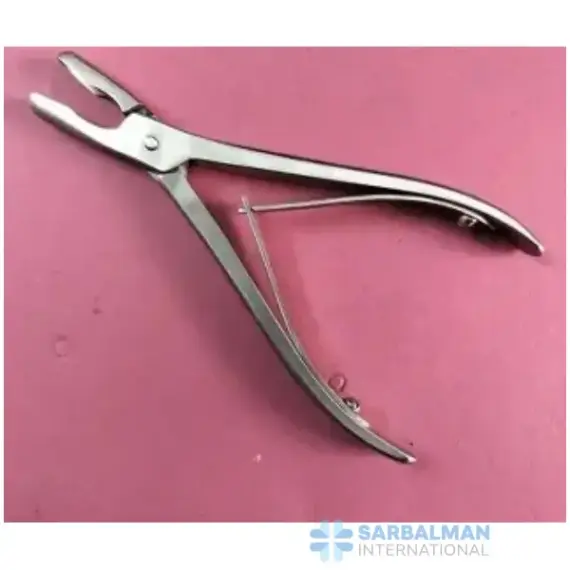Bone Nibbler
Free!
Description
A bone nibbler is a robust orthopedic surgical instrument designed for precise trimming, nibbling and removal of small bone fragments. It is widely used in trauma, spine, joint reconstruction and general orthopedic procedures to smooth sharp bone edges, contour bone surfaces and clear fragmented bone from operative sites. Its strong jaws and lever-action handle allow controlled bone cutting with minimal effort, helping surgeons work efficiently while preserving surrounding tissue.
Manufactured from high-quality surgical stainless steel, the bone nibbler offers excellent durability, corrosion resistance and compatibility with standard sterilization methods. It is commonly available in single-action and double-action designs, as well as straight and curved patterns, enabling surgeons to choose the ideal configuration for each anatomical region. Double-action models increase cutting power and reduce hand fatigue, while curved variants enhance access in confined or angled spaces.
Key Features
-
Heavy-duty jaws for accurate removal of small bone fragments
-
Single-action or double-action mechanism for controlled cutting force
-
Options in straight and curved patterns for different surgical approaches
-
Ergonomically contoured handles for secure, comfortable grip
-
Reusable, stainless-steel construction suitable for repeated sterilization
Primary Benefits
-
Provides clean, controlled bone trimming for safer fixation and implant placement
-
Reduces sharp prominences that can irritate soft tissue or damage implants
-
Enhances visibility and access in the surgical field by removing loose fragments
-
Supports consistent, reliable performance in demanding orthopedic environments
Common Uses and Applications
-
Fracture fixation and debridement
-
Spine surgeries, including laminectomy and decompression
-
Joint reconstruction and arthroplasty preparation
-
Orthopedic oncology and reconstructive procedures
Compared to improvised cutters or general rongeurs, a dedicated bone nibbler delivers stronger bite force, better control and more refined bone shaping—making it a key instrument in any professional orthopedic or trauma setup.




